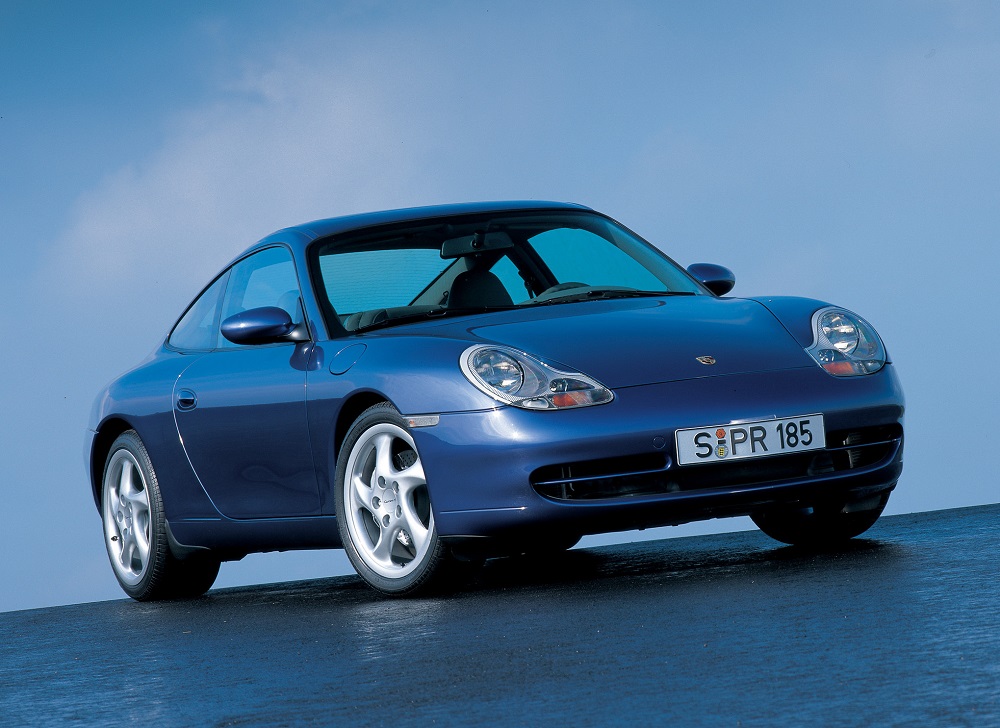The Mezger Six: Evolution of an Automotive Game-Changer

How one of Porsche’s best engines evolved alongside one of its worst.
If you’re not old enough to rent a car then the only Porsche you’ve likely ever known is the current iteration: the business-savvy, Volkswagen-owned, SUV-making, hot mom transporter with engines cooled by witchcraft/water. Roll the clock back 25 years, however, and you have a completely different company.
From their inception all the way up through the mid-’90s, Porsche was a small, family owned, sports car company run by a bunch of brilliant engineers who had the business sense of a golden retriever with a learning disability. They would do things like build the fastest, most technologically advanced car in the world, and then sell it for less than half what it cost them to make it. Their business philosophy was essentially, “let’s just go racing and we’ll figure everything else out later.”
Well, by the time the late-’90s arrived, Porsche was a financial nightmare. The company was hemorrhaging money to the point of having to take on side hustles building engines for competitors to pay the bills. They were turning into Germany’s version of Lotus, and the vultures were beginning to circle. Toyota was waving an inflation-adjusted $2 billion under their nose to be a jewel in their corporate crown. Porsche had reached a defining crossroads. They could either take the easy way out and be the automotive equivalent of a trophy wife, or bet on themselves and risk everything. Hindsight being what it is, we know how things shook out: They told Toyota thanks but no thanks, took a few business classes, and pulled off one of the more impressive financial turnarounds in automotive history. The blueprint of which was hardly groundbreaking: cut costs, increase efficiency. Enter, the M96.

The M96 engine was meant to be Porsche’s first step toward a brighter future. It was an all-new, water-cooled flat-six and the physical embodiment of Porsche’s new lower cost, higher efficiency lifestyle. It contained fewer parts than its air-cooled older brother (408 compared to 480), was shorter, lighter, cheaper to produce, and only took one man-hour to assemble instead of the previous seven. Unfortunately, it would also prove to be one of the worst engines the company ever made.
The thing about cutting the time and money required to make something is, the quality and reliability of that something tend be reflective of that, and Porsche’s new engine was no exception. From cracked cylinder heads to the legendary IMS bearing failure (which effectively turned your 996 into a paper weight you could sit in), the laundry list of problems associated with M96 are well documented. However, thanks to a last-minute intervention by Porsche’s old brain trust (read: racing department), instead of powering all upcoming 911 models as planned, it only ended up powering most 911s.
The M96 was meant to be Porsche’s first step toward a brighter future… Unfortunately, it would also prove to be one of the worst engines the company ever made.
The problem with the M96 wasn’t that it was an expensive, unreliable, poorly-engineered dumpster fire of an engine (googling “996 LS1 swap” will quickly prove it was), but that it couldn’t go racing. The M96 was a wet-sump engine. Wet-sump engines can’t go racing. 911s go racing. That’s their thing. The day that it’s not their thing is the day the fabric of reality as we know it tears apart. Thankfully, the guys in the racing department realized this and proceeded to bitch and moan until the company finally agreed to cook up an engine whose oil pressure didn’t drop to 30 psi under hard cornering. The problem was they only had a few months and a used parts bin to make it happen.
